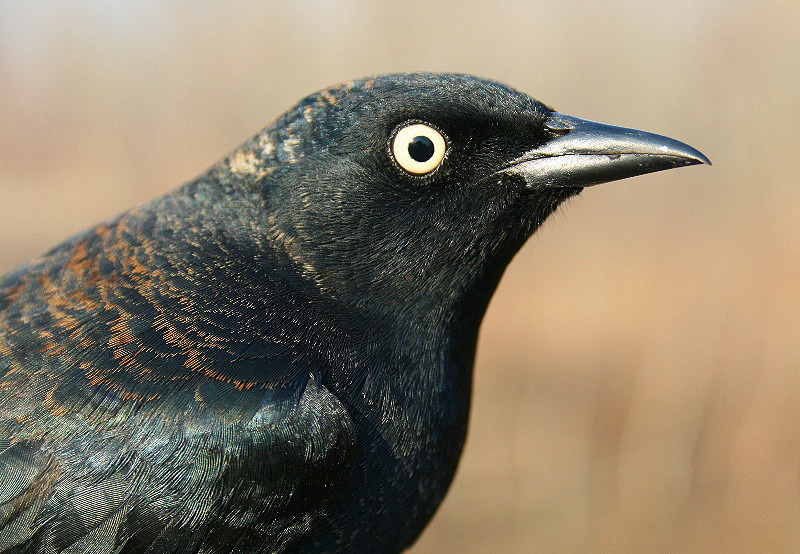Migration blitz targets rusty blackbirds
Thursday, March 13, 2014
MORE ONLINEFind bird and habitat identification guides, listen to calls and get state-by-state participation information on the Spring Migration Blitz at rustyblackbird.org
Birdwatchers are being called upon to act as citizen scientists this month during the 2014 Spring Migration Blitz to track one of North America's most rapidly declining migratory bird species, the rusty blackbird.
Once common in North America, rusty blackbirds have declined an estimated 85 percent to 95 percent in population over a 40-year period, according to the U.S. Fish and Wildlife Service. This marks one of the most significant declines documented for a bird species anywhere in North America, officials say.
"Rusty blackbird migration remains a big mystery," says Dr. Judith Scarl, of the Vermont Center for Ecostudies and international coordinator for the blitz. "Without an understanding of stopover locations, migratory timing or migratory hotspots, we cannot even begin to design conservation strategies to protect this species during one of the critical periods in its annual cycle."
The International Rusty Blackbird Working Group is organizing the blitz, in which birdwatchers gather data during the migration period and submit their findings to eBird, even if they don't see a bird. It's just as important to better understand where rusty blackbirds occur as it is to know the locations where they have not been found, officials say.
The migratory time period is all of March in Tennessee and Alabama, the first three weeks of March in Georgia. During migration, rusties are often associated with shallow water, such as flooded forests and the edges of creeks and ponds, as well as pecan orchards and crop fields.
National wildlife refuges are common sighting spots, but birdwatchers are also asked to monitor local parks or even a neighborhood woodlot.
The blitz will track rusties on their northward migration from the southeastern United States into Canada and Alaska. The route, which encompasses 38 states, nine Canadian provinces and three Canadian territories, targets peak migration dates for each region from early March through mid-June.

